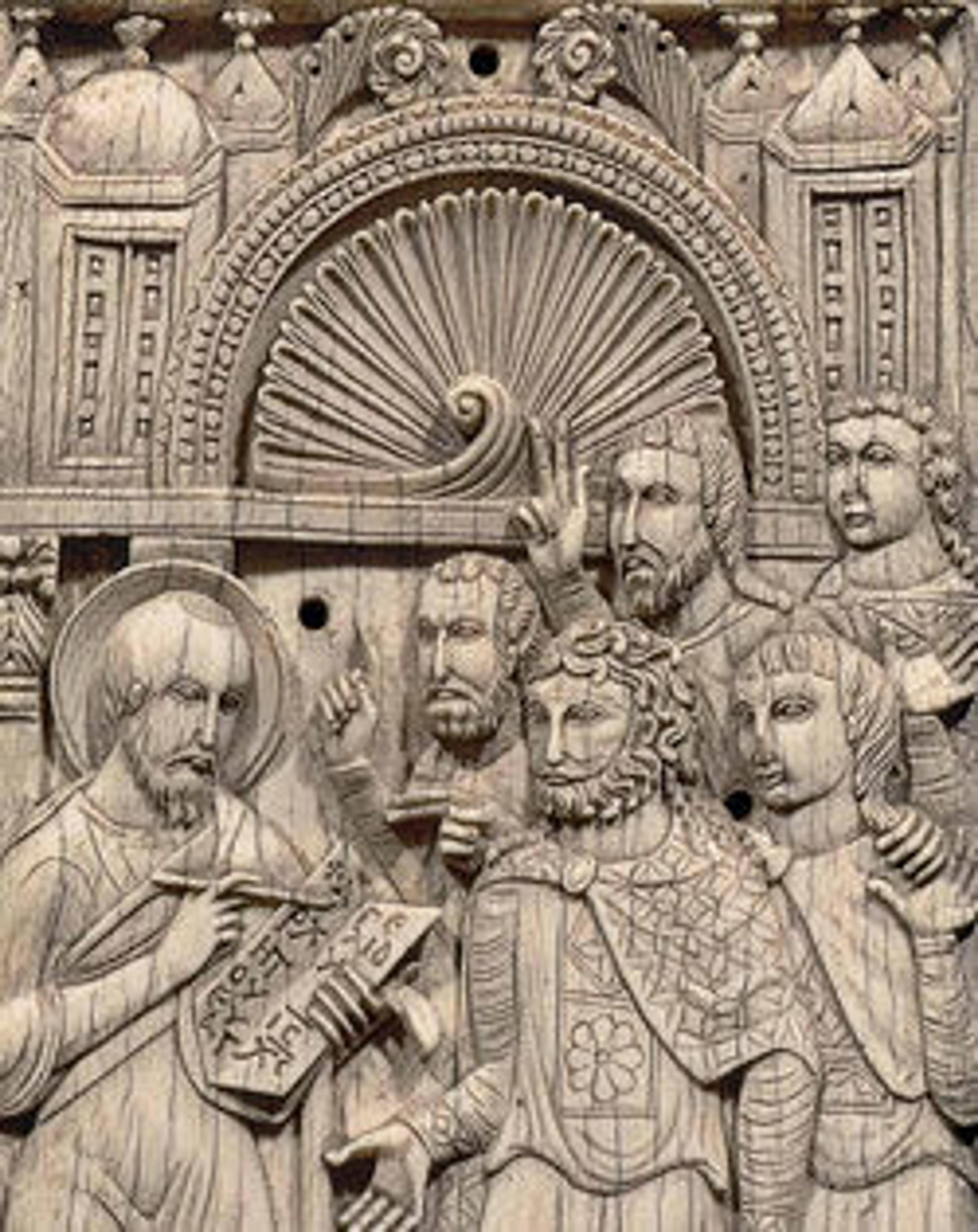Fragment of a Door Jamb with Geometric and Vegetal Motifs
The monastic community of Bawit, founded in the 300s by Apa (Father) Apollo at a small village, grew to consist of numerous complexes with residences, chapels, and service structures and two large churches profusely decorated with sculptures and paintings, often reused from other sites, all affiliated with the Coptic church. The more important buildings were decorated with courses of sculpted stone freely combining floral and geometric motifs inspired by classical art – rosettes, acanthus leaves, meander patterns – with more recent Christian themes. These sculptural elements, demonstrating the Byzantine love of complex patterning with lush textures, were originally painted in rich, vibrant colors like those surviving in textiles.
Artwork Details
- Title:Fragment of a Door Jamb with Geometric and Vegetal Motifs
- Date:5th–6th century
- Geography:Found Egypt, Bawit
- Medium:Limestone; traces of paint on plaster
- Dimensions:H. 34 1/4 in. (87 cm)
W. 10 5/8 in. (27 cm)
D. 15 3/4 in. (40 cm)
Wt. - Classification:Sculpture
- Credit Line:Rogers Fund, 1910
- Object Number:10.175.77
- Curatorial Department: Islamic Art
More Artwork
Research Resources
The Met provides unparalleled resources for research and welcomes an international community of students and scholars. The Met's Open Access API is where creators and researchers can connect to the The Met collection. Open Access data and public domain images are available for unrestricted commercial and noncommercial use without permission or fee.
To request images under copyright and other restrictions, please use this Image Request form.
Feedback
We continue to research and examine historical and cultural context for objects in The Met collection. If you have comments or questions about this object record, please contact us using the form below. The Museum looks forward to receiving your comments.
